120 videos match your search.
 |
Joseph Butner This talk discusses the possibilities of using Mathematica within checkpoint inhibitor immunotherapy, a clinical approach to cancer treatment, to more accurately predict treatment outcomes allowing for even more personalized treatment ... |
 |
Chi-Ok Hwang Thanks to MathSymbolica based on Mathematica and developed by Prof. Youngju Chung in Korea, my last-passage algorithm Green function development has been very easy. The symbolic computing becomes complicated as we go from dipole, quadrupole and octupole. However, ... |
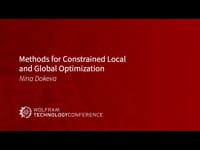 |
Nina Dokeva This talk covers Wolfram Language numerical optimization functions for constrained local and global optimization, how they classify and process the inputs into the form required by different solvers and the ... |
 |
Ankit Naik In this presentation, we will explore the Modelica Fluid library. This library provides components for one-dimensional thermo-fluid flow in networks of vessels, pipes, fluid machines, valves and fittings. For this ... |
 |
Oliver Reubenkoenig This talk demonstrates techniques for setting boundary constraints and boundary loads common in solid mechanics and how they map to Wolfram Language, providing capabilities to build and analyze real-world solid ... |
 |
Olivier Rousselle We consider an atomic system (hydrogen) where we want to observe interference fringes. To do that, we use a small mirror in which the atoms will perform quantum bounces (due to the confinement between gravity and Casimir–Polder potential). We use Mathematica to implement quantum bounces. Such system can be generalized ... |
 |
Anton Antonov This presentation discusses designing a conversational agent for data acquisition workflows, an extension of the work on multilanguage data wrangling conversational agents from WTC-2020, including the various facets and subparts. |
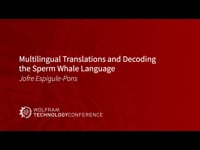 |
Jofre Espigule-Pons This talk will introduce the transformer machine learning model, which revolutionized the field of natural language processing. Then I will present M2M -100, the first multilingual machine translation (MMT) ... |
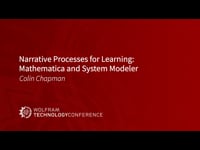 |
Colin Chapman The Victorian Curriculum and Assessment Authority Systems Engineering Study teaches students to design, produce, operate, evaluate, and improve integrated systems while considering systems' interactions with people, society, and ecosystems. It ... |
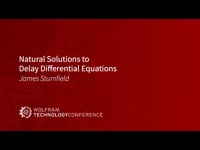 |
James Sturnfield This presentation illustrates the calculation of natural solutions for problems containing delay differential equations (DDE) with a single time delay for both linear and nonlinear equations, with and without starting ... |
 |
Eric Dolores-Cuenca In our study of nonlinear Signal-flow graphs we used the software Mathematica to obtain evidence about new combinatorial identities. Eventually we proved those identities. |
 |
Paco Jain and Oleg Marichev This talk presents a new approach to fractional order integro-differentiation, possible thanks to a newly published function in the Wolfram Function Repository---ResourceFunction ["FractionalOrderD"]. |
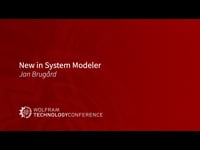 |
Jan Brugard In this presentation, the key features for System Modeler 12.3, as well as the upcoming release, will be presented. Furthermore, we will show how System Modeler models can be run and ... |
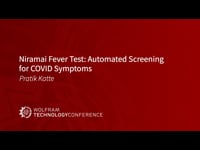 |
Pratik Katte This talk includes a detailed overview of deep learning for automated fever detection that led to the development of fever-test software that could help track early symptoms of COVID-19 in ... |
 |
Matts Jirstrand In this talk, we give a brief overview of a (free) package for nonlinear mixed effects (NLME) modeling in Mathematica, implementing the so-called first-order conditional estimation method with sensitivity equation-based ... |
 |
Anthony Zupnik The Notebook Templating paclet provides a rich environment for creating repeatable documents using templates. Come along to this workshop where you will explore the scope of the paclet as well ... |
 |
Kunal Khadke and Jayanta Phadikar This presentation addresses best practices when creating Wolfram Language notebook-based publications based on processes learned while creating courses for Wolfram U, customer consulting projects and studies of previous notebook-based publications. |
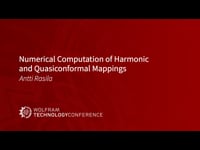 |
Antti Rasila This presentation addresses numerical computation of harmonic and quasiconformal mappings, which are natural generalizations of conformal mappings. Theoretical background of the method and numerical computation of mappings with Mathematica are ... |
 |
Richard Carbone Wolfram Language provides the ability to work with a broad range of capabilities that apply to various areas of forensic analysis frameworks. This presentation shows brief examples of complete applications, ... |
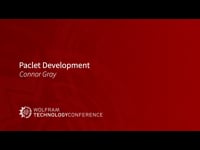 |
Connor Gray Wolfram Language paclets are the standard way to extend the Wolfram System with new functionality. In this presentation, you will learn how to create and share high-quality paclets. |